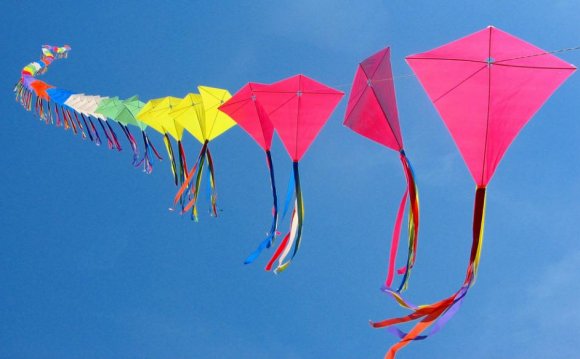
 Have you ever wondered how a kite stays in the air? Wind is very important but so are two scientific terms: gravity and lift.
Have you ever wondered how a kite stays in the air? Wind is very important but so are two scientific terms: gravity and lift.
When something is in the air, gravity is what pulls it back down to the ground. When you throw a ball in the air, it comes back down because of gravity. When you trip and fall… that’s gravity. When leaves fall off trees onto the ground… that’s gravity. When you put a kite in the air, gravity wants to bring it down. So what keeps it up? Wind! Wind creates lift.
Lift is what happens when wind pushes against something and carries it up. When a plastic bag gets caught in the wind, lift is what causes it to rise into the air. When you put a ribbon in front of a fan, lift causes it to wave. An object’s lift depends on the size of its surface, or its area. A piece of paper will float in the wind, but if you crumple that paper into a ball, it won’t float as well. That’s because you’ve made the surface smaller. When a kite is lifted by the wind, the wind pushes against the whole surface of the kite to lift it up.
To find out if there’s enough wind to fly a kite, go outside and look up. If you see leaves blowing on trees or flags waving sideways, it’s probably good kite-flying weather. When the wind is strong enough to move a flag, it’s moving at 7 to 18 miles per hour. That’s just right to lift a typical kite.
If you’re not sure, you can take your kite outside and try it. First, ask an adult to help you find a safe area to fly your kite. Be especially careful to stay away from power lines. You can help your kite lift off the ground by running. Just make sure you look where you’re going!
YOU MIGHT ALSO LIKE









